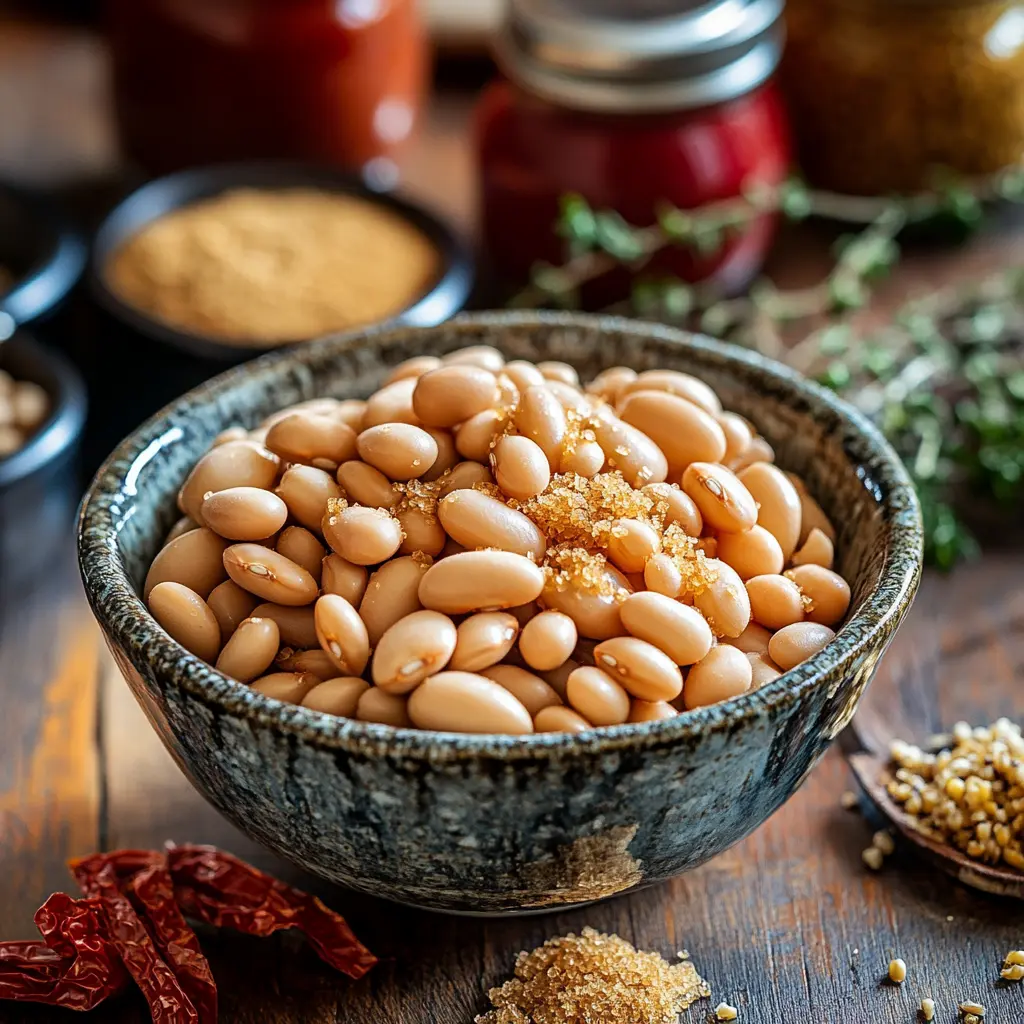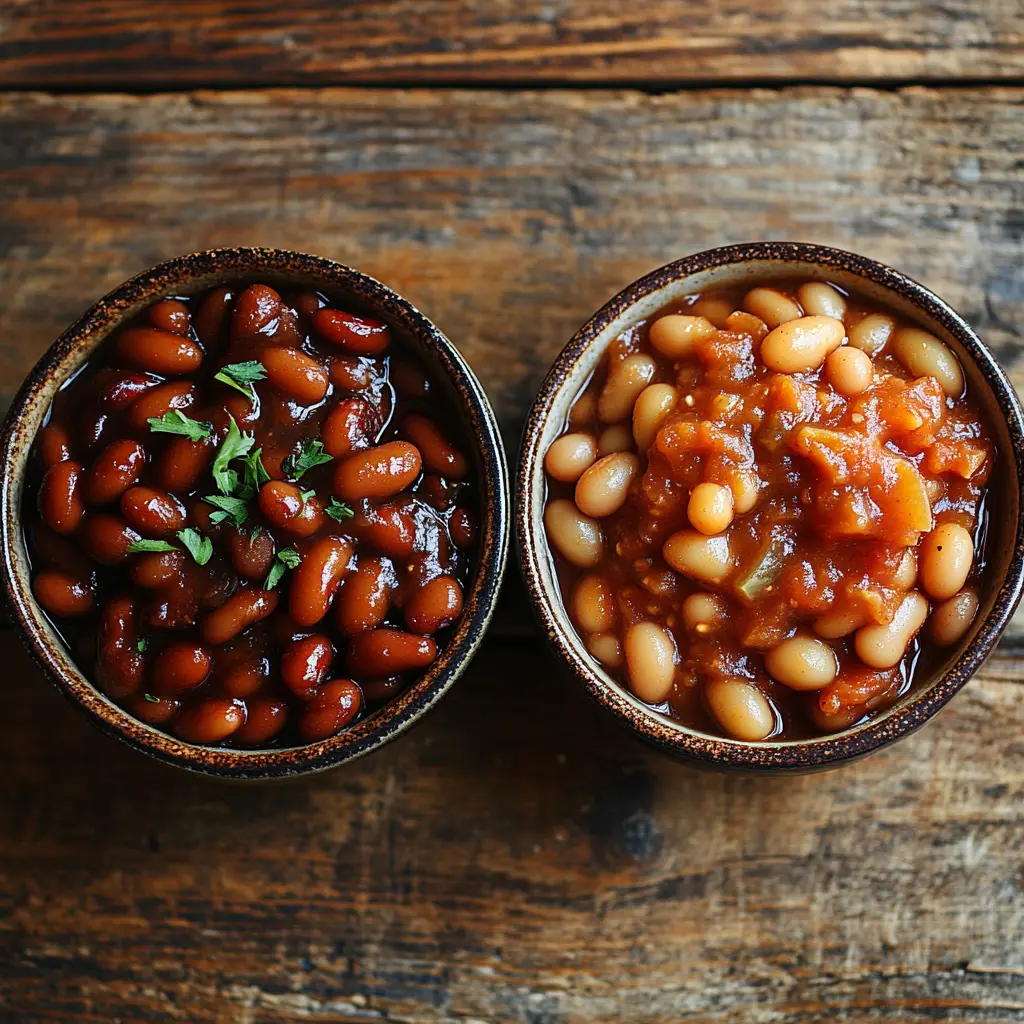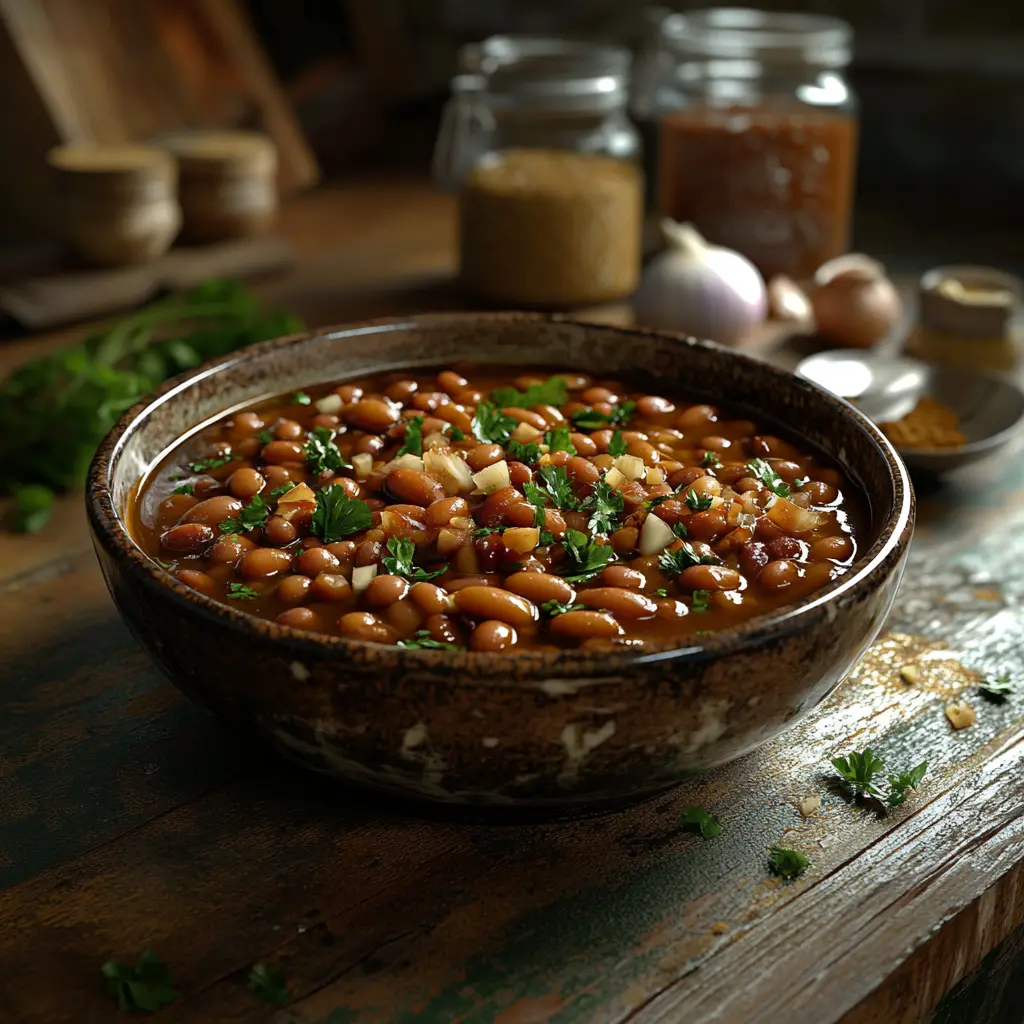Introduction
Baked beans are a universally beloved dish, celebrated for their rich flavors and comforting appeal. Whether they’re served as a side at barbecues, a hearty addition to breakfast, or the centerpiece of a homely meal, baked beans never fail to deliver. But what makes this dish so delicious? The magic lies in the ingredients, which vary across regions and personal preferences. This article delves deep into the components that make up baked beans, from the humble bean to the rich array of seasonings, ensuring you can create a version that’s perfect for your taste buds.
Part 1: Understanding Baked Beans and Their Ingredients
Baked beans, a time-honored dish, have traversed generations and continents. But the essence of this dish? It’s all about simplicity and balance. The classic combination of legumes, sweeteners, savory elements, and aromatic spices forms the base, while regional variations add unique twists.
What Exactly Are Baked Beans?
At their core, baked beans are legumes cooked in a sauce. This sauce can range from a sweet molasses blend to a tangy tomato-based medley, depending on cultural influences. These beans are often slow-cooked, allowing the flavors to meld beautifully. Despite their humble origins, they are now a staple in cuisines worldwide.
Why the Ingredients Matter
Each ingredient plays a pivotal role in achieving that signature flavor profile. The type of bean chosen, the sweetener used, and the seasoning blend all contribute to creating a dish that’s as satisfying as it is versatile. Plus, with plant-based and health-conscious trends on the rise, baked beans are becoming more adaptable than ever.
Let’s dive deeper into the key components of this classic dish, starting with the beans themselves.
Part 2: Core Components of Baked Beans
The Primary Bean Varieties Used in Baked Beans
The beans you choose define the texture and flavor of baked beans. While the classic version often uses navy beans, there are other equally delicious options.
Navy beans, also known as haricot beans, are small, tender, and creamy. They are perfect for soaking up the rich sauce, making them a popular pick for traditional baked bean recipes.

Alternative Beans: Pinto, Great Northern, and More
For a twist, pinto beans, Great Northern beans, or even cannellini beans can be used. Each type offers a unique texture and subtle differences in flavor, giving the dish a fresh take.
The Role of Sweeteners in Baked Beans
Sweeteners create the iconic balance of sweet and savory in the dish.
Molasses: Traditional Sweetness and Flavor
Molasses, a staple in many baked bean recipes, provides a robust, smoky sweetness that complements the other ingredients perfectly.
Brown Sugar and Maple Syrup Variations
For those looking to experiment, brown sugar adds a caramel-like depth, while maple syrup introduces a delicate natural sweetness that’s hard to resist.
Savory Elements in Baked Beans
Adding savory ingredients enhances the complexity of flavors in the dish.
Incorporating Smoky and Umami Notes
Instead of bacon or pork, smoked paprika or liquid smoke can deliver a satisfying smokiness. Adding a splash of soy sauce boosts the umami flavors, making it a hearty and vegetarian-friendly alternative.
Plant-Based Protein Alternatives
For added texture and substance, diced mushrooms, lentils, or plant-based sausage crumbles can replace traditional meat components without sacrificing flavor.
This rich interplay of sweet, savory, and bean-based goodness is what makes baked beans an irreplaceable comfort food. Next, let’s explore how aromatics and seasonings take these flavors to the next level.
Part 3: Flavor Enhancers and Seasonings
Aromatics: Onions, Garlic, and Peppers
Aromatics are the foundation of any great dish, and baked beans are no exception. They add depth and complexity, creating a flavor base that elevates the entire recipe.
- Onions: Finely chopped onions release natural sweetness as they cook, enhancing the sauce’s richness.
- Garlic: Minced garlic brings a warm, savory note that melds beautifully with the beans.
- Peppers: Adding diced bell peppers or a pinch of chili flakes introduces a subtle heat or sweet undertone, depending on your preference.
Tomato-Based Ingredients: Paste, Sauce, and Ketchup
Tomato elements are vital for achieving that tangy undertone baked beans are known for.
- Tomato Paste: This concentrated form of tomato adds a thick, rich consistency to the sauce.
- Tomato Sauce: Often used as a base, it provides a smooth texture and balanced acidity.
- Ketchup: A common addition, ketchup not only sweetens the sauce but also introduces subtle spices, creating a well-rounded flavor.
Mustard and Vinegar: Adding Tanginess
Tangy flavors cut through the richness of baked beans, providing a delightful contrast.
- Mustard: Whether you use Dijon, yellow, or whole grain, mustard adds a zesty kick that brightens the dish.
- Vinegar: A splash of apple cider or white vinegar balances the sweetness, giving the beans a nuanced finish.
Spices and Herbs: Customizing the Flavor Profile
The right blend of spices and herbs can transform baked beans into a culinary masterpiece.
- Smoked Paprika: Imparts a smoky depth, mimicking traditional meat-based recipes.
- Cumin: Adds an earthy undertone, pairing well with tomato-based sauces.
- Thyme or Bay Leaves: A touch of herbal complexity elevates the overall flavor.
- Black Pepper: Freshly ground pepper provides a subtle heat and enhances the other spices.
These flavor enhancers not only make baked beans irresistibly tasty but also allow room for creative experimentation. Now, let’s uncover how regional variations and preparation methods influence this iconic dish.
Part 4: Regional Variations and Preparation Methods
Regional Differences in Baked Beans Recipes
Baked beans recipes vary widely depending on where you are in the world, each region adding its unique spin to this classic dish.
Boston Baked Beans: A Molasses Tradition
Boston baked beans are perhaps the most famous variation, characterized by their use of molasses and navy beans. This combination creates a rich, smoky sweetness that’s slow-cooked to perfection.
British Baked Beans: Tomato-Based Simplicity
In contrast, British baked beans focus on simplicity, using a lighter tomato sauce as the base. Often served as part of a traditional English breakfast, they are slightly tangy and less sweet.
Cooking Methods: Oven-Baked vs. Slow Cooker
Your cooking method significantly impacts the texture and flavor of your baked beans.
Oven-Baked Beans: The Classic Method
The oven method is ideal for achieving a caramelized, slightly crisp top layer. Slow-cooking in the oven also allows the flavors to meld beautifully, resulting in a thick, hearty dish.
Slow Cooker Beans: Convenience Meets Flavor
For those seeking a hands-off approach, a slow cooker is the way to go. This method lets the beans absorb the flavors over hours, producing a tender, sauce-infused dish without constant monitoring.
Health Considerations: Nutritional Content and Modifications
You can adapt baked beans to meet various dietary needs, making them a versatile table option.
Lower Sugar and Sodium Options
Reducing sugar by substituting natural sweeteners like honey or using low-sodium tomato products can make the dish healthier without compromising taste.
Adding Nutrient-Rich Ingredients
Incorporate nutrient-dense vegetables like carrots or zucchini, or mix in high-fiber grains such as quinoa for added health benefits.
Part 5: Tips for Perfect Baked Beans Every Time
Crafting the perfect baked beans requires attention to detail and a few tried-and-true tips. Whether you’re a novice or a seasoned cook, these insights can help elevate your dish to the next level.
Choose the Right Beans for the Job
While navy beans are the traditional choice, experimenting with varieties like pinto beans or Great Northern beans can add interesting textures and flavors. Always soak dried beans overnight before cooking for even softness and reduced cooking time.

Balance the Sweet and Savory
Finding the right balance between sweet and savory is crucial for baked beans. Use natural sweeteners like molasses, honey, or maple syrup sparingly, and offset with savory ingredients like smoked paprika or soy sauce to create depth.
Don’t Skip the Simmer
Patience helps achieve baked beans with fully developed flavors. Slow cooking, whether in an oven or slow cooker, allows the beans to absorb the sauce thoroughly. This process enhances the taste and creates a creamy texture.
Layer the Flavors
Add ingredients in stages to build complex flavors. Start with aromatics like onions and garlic, followed by the beans and sauce base. Add spices and tangy elements like mustard and vinegar last to preserve their sharpness.
Experiment with Texture
For a thicker sauce, mash some of the cooked beans and stir them back into the pot. Conversely, if you prefer a lighter consistency, add a splash of water or stock as needed.
Store and Reheat Properly
Baked beans often taste better the next day as the flavors continue to meld. Store leftovers in an airtight container and reheat gently to avoid drying them out. Add a bit of water if the sauce becomes too thick.
By incorporating these tips, you can ensure your baked beans turn out perfect every time. With this knowledge, you’re ready to tackle any recipe with confidence, bringing out the best in this comforting classic. Now, let’s address some frequently asked questions to cover any lingering queries!
From molasses-rich Boston beans to tomato-forward British recipes, and from traditional oven-baked to slow-cooked versions, baked beans offer endless possibilities to suit every palate. Now, let’s address some common questions about this beloved dish in our FAQ section.
FAQs: Common Questions About Baked Beans
What type of beans are used in baked beans?
The most common beans for baked beans are navy beans, also called haricot beans. However, alternatives like pinto beans, Great Northern beans, or cannellini beans can be used depending on personal preferences and availability.
Can baked beans be made without meat?
Absolutely! Baked beans can be made vegetarian by omitting meat-based ingredients and replacing them with smoked paprika, liquid smoke, or plant-based sausages to replicate the savory flavors traditionally provided by meat.
How can I reduce the sugar content in baked beans?
You can cut back on sugar by using natural sweeteners like honey or maple syrup in small amounts. Alternatively, opt for unsweetened tomato products and adjust the sweetness with spices like cinnamon or allspice.
What are some vegetarian alternatives to bacon in baked beans?
To replace bacon, consider using smoked paprika, mushrooms, or tempeh. These ingredients provide a savory, umami-rich flavor that complements the beans and sauce perfectly.
How do regional recipes for baked beans differ?
Regional recipes vary mainly in sweetness and seasoning. For example, Boston baked beans use molasses for a rich sweetness, while British baked beans are less sweet and focus on a lighter tomato-based sauce. Other regions may add specific spices or aromatics to reflect local tastes.
What are the health benefits of eating baked beans?
Baked beans are a good source of fiber, protein, and essential nutrients like iron and magnesium. When prepared with reduced sugar and salt, they become a healthy addition to any diet, supporting digestion and providing sustained energy.
What do baked beans contain?
Baked beans typically contain beans (such as navy beans), a sweetener like molasses or brown sugar, a savory base (often including onions, garlic, or spices), and a sauce that can be tomato-based or flavored with mustard and vinegar. The exact ingredients depend on the recipe, but the balance of sweet, savory, and tangy elements is a hallmark of this dish.
What are baking beans made of?
Baking beans, or dried beans used as weights when baking pies, are made of ceramic or metal. These are non-edible and are used to prevent the pastry from puffing up during blind baking. However, in the context of edible baked beans, they are made of legumes, typically navy beans or other small white beans, cooked with a rich sauce.
What are the ingredients in Bush’s baked beans?
Bush’s baked beans, a popular store-bought option, include navy beans, brown sugar, water, salt, onion powder, and a tomato-based sauce. The specific recipe varies by flavor, with additional ingredients like mustard or spices for different varieties. The brand prides itself on a savory-sweet balance, making it a staple for many households.
With these common questions answered, let’s wrap up with a brief conclusion to tie everything together.
Conclusion: Crafting Your Perfect Baked Beans Recipe
Baked beans are a timeless dish with endless possibilities for customization. Whether you prefer the molasses-rich sweetness of Boston-style, the tangy simplicity of British recipes, or your unique blend of flavors, the secret lies in choosing the right ingredients and cooking method. From the selection of beans to the balance of sweet, savory, and tangy elements, every component plays a crucial role in crafting the perfect dish.
Now that you’ve explored the key components, flavor enhancers, regional variations, and health-conscious tips, you’re equipped to create baked beans that satisfy every palate. So, gather your ingredients, experiment with the suggestions, and enjoy the heartwarming comfort of homemade baked beans!

